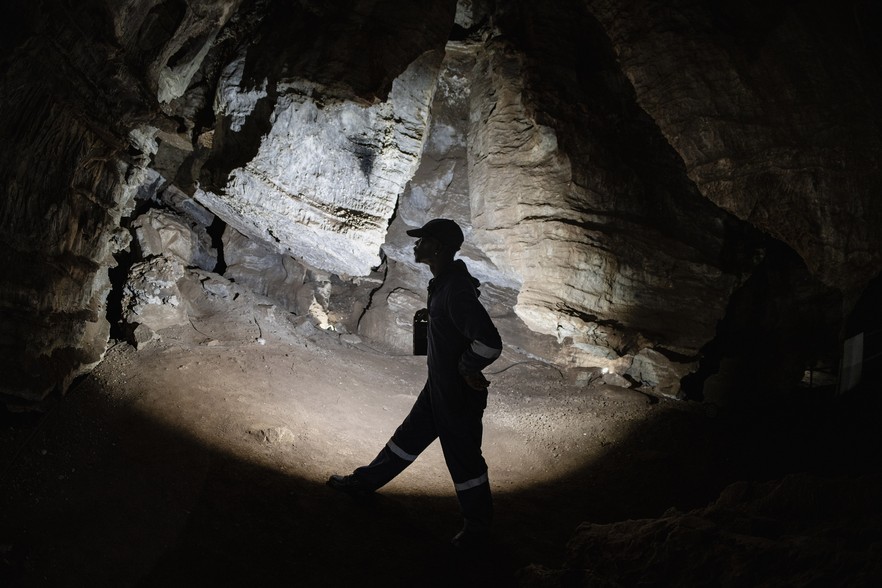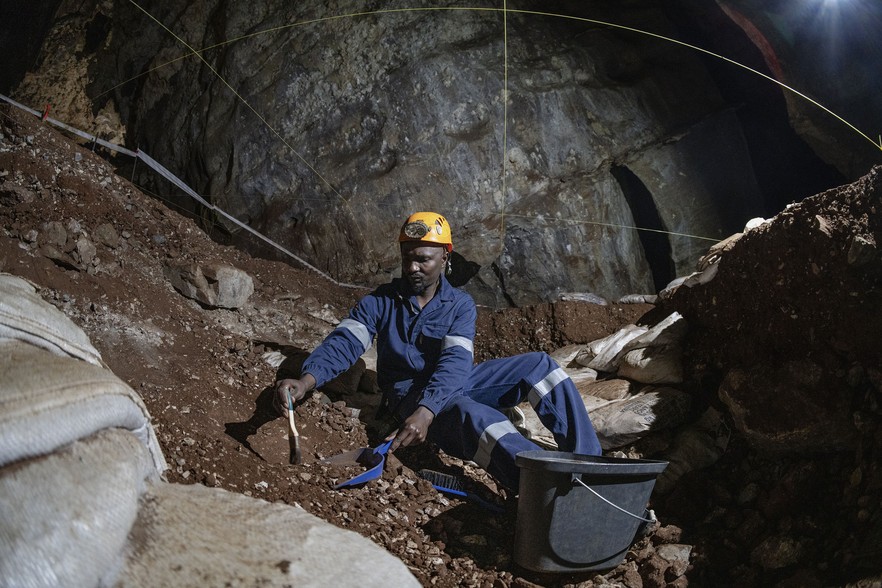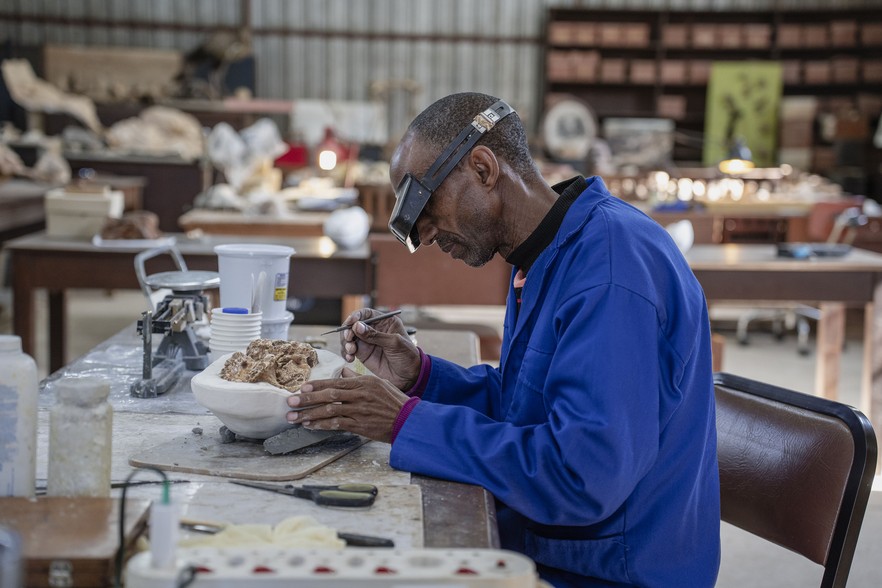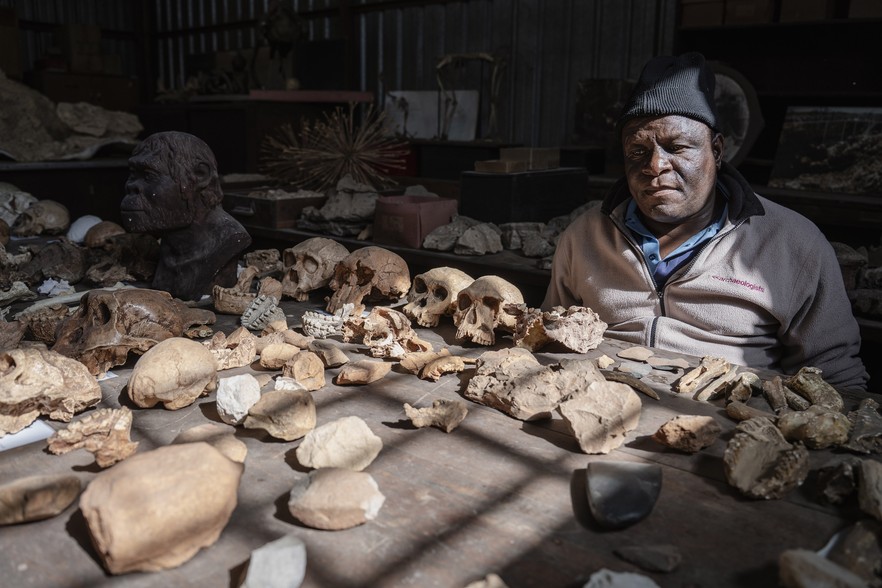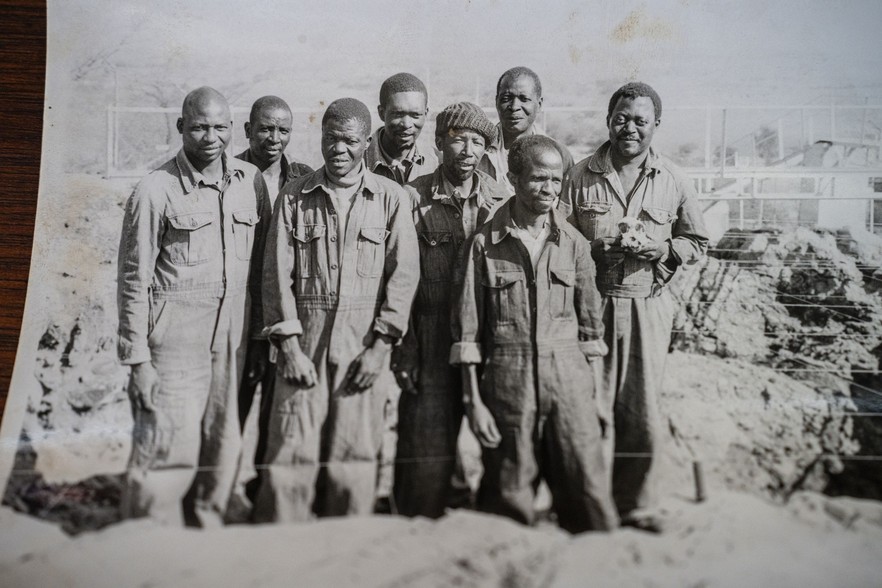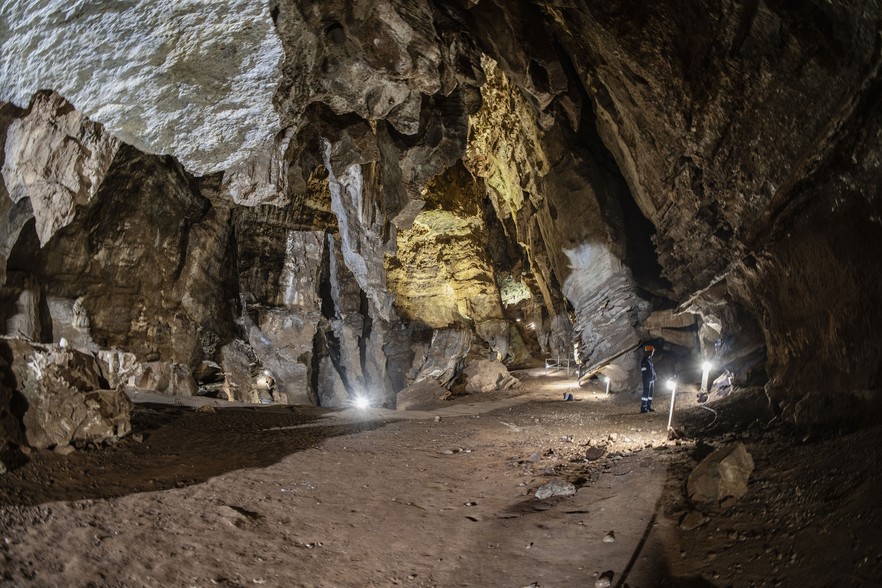In photos: The fossil hunters of the Sterkfontein Caves
There is growing recognition of the work they have done
Fossil technician Sipho Makhele moving around the darkness deep underground at the Sterkfontein Caves near Johannesburg. The caves are located within the Cradle of Humankind UNESCO World Heritage Site. Photos: Ihsaan Haffejee
- We spent some time with fossil technicians at the Sterkfontein Caves near Johannesburg.
- The caves are located within the Cradle of Humankind UNESCO World Heritage Site and have yielded some of the world’s most important fossil discoveries.
- The work by the fossil technicians has not been adequately recognised. But scientists at the Sterkfontein Caves are now working to change this.
Itumeleng Molefe remembers the day his neighbours came rushing into his family’s Rustenburg home, saying his father was famous because they had just seen him on TV. “People were screaming, yelling and celebrating. It was very cool to experience,” said Molefe.
Itumeleng’s father, Nkwane Molefe, and his colleague, Stephen Motsumi, had just made one of the greatest fossil discoveries. The pair, both fossil technicians at the Sterkfontein Cave system, worked under the guidance of paleoanthropologist Ronald Clarke who had unearthed the remains of a skeleton famously known as “Little Foot”. It was the world’s most complete Australopithecus fossil ever found and estimated to be nearly four-million years old.
The Sterkfontein Caves are located within the Cradle of Humankind UNESCO World Heritage Site where some of the world’s most important fossil discoveries have been made.
Fossil technician Itumeleng Molefe working inside the Sterkfontein caves just as his father did many years ago.
Today Itumeleng carries on the work of his now retired father. He too works as a fossil technician in the Sterkfontein Cave system, searching daily for bones that can help unlock the mysteries of our past.
“The work that we do is very important,” says Itumeleng. “It helps with our understanding and knowledge of the world we live in. The best part of my job is that we are constantly learning and discovering new things. You have to have passion for this job to do it well because it’s not easy.”
Fossil technicians play a vital role in the caves. They do the day-to-day tasks of extracting rocks. They spend thousands of hours painstakingly separating the fossil from the rock so as not to damage the fossil. They also make cast models of their fossil finds and catalogue them so that everything is properly labelled and organised.
Fossil technician Abel Molepolle shows an old photograph of his father David Molepolle when he worked as a fossil technician at the caves, joining the team in 1967.
Many of the fossil technicians, like those working at the Sterkfontein Cave system, have been doing this job for decades and have amassed an abundance of knowledge of the caves and the fossils buried there.
Dr Job Kibii, head of the Sterkfontein Caves, says that the knowledge and experience of fossil technicians are an invaluable resource for researchers. “These guys might not have degrees, but they actually know everything. In fact, a number of them have actually taught the professors and researchers who come to the site.”
Fossil technician Abel Molepolle works on making a cast of a fossil at the Sterkfontein Caves.
“They show them how to distinguish between different fossils, which are from a [non-hominid] animals, and which are from hominids. And then the professors eventually would go ahead and do the description. But initially they learned from these guys that this is what you should be looking for,” says Kibii.
A legacy of colonialism and the skewed power dynamics that defined race and social class has meant that over the years, the work by the fossil technicians has not been adequately recognised by the scientific community and the public. The invaluable contributions of fossil technicians, often black and with no formal higher education, have been relegated to the footnotes of the history pages that document their findings.
Fossil technician Andrew Phaswana with some of the fossil casts he produced with his team. Phaswana and his team create moulds and casts from the original fossils so that the casts can be used for scientific study while the originals are stored away for safe keeping.
Dr Kibii acknowledges that how things were done in the past by the scientific community has been a disservice to fossil technicians.
He is now actively working to change this by educating scientists who hold research permits at the site on the importance of the work fossil technicians do.
“I want them to be included in the actual publications, in the actual descriptions of those specimens. So that they can be recognised with the academic contribution,” he says. And then emphasising: “Because it is an academic contribution.”
Fossil technician Sipho Makhele excavates in the Silberberg Grotto at the Sterkfontein caves near the location where “Little foot” was discovered.
Another fossil technician Sipho Makhele adds: “We are not asking for much. We are just asking to be acknowledged for the work that we do.”
Makhele, like many of the fossil technicians, has deep family ties to the site. He is the third generation in his family to work at the caves. “Now my young daughter is also interested and has begun her university studies in anthropology,” Makhele says proudly.
“So, we will keep digging and digging, there’s still plenty to find down there.”
An undated photo showing some of the old fossil technicians. Itumeleng’s father, Nkwane Molefe is the second from right. Steven Motsumi is fifth from right. The pair, both fossil technicians at the Sterkfontein Cave system and working under the guidance of paleoanthropologist Ronald Clarke, had unearthed the remains of a skeleton that has come to be known as “Little Foot”.
Inside the Sterkfontein Caves, which are located within the Cradle of Humankind UNESCO World Heritage Site near Johannesburg and have yielded some of the most important fossil discoveries.
Support independent journalism
Donate using Payfast

Don't miss out on the latest news
We respect your privacy, and promise we won't spam you.
Next: Giyani’s rotting market stalls still empty after 14 years
Previous: New book tells the life of veteran activist Mandla Majola
© 2025 GroundUp. This article is licensed under a Creative Commons Attribution-NoDerivatives 4.0 International License.
You may republish this article, so long as you credit the authors and GroundUp, and do not change the text. Please include a link back to the original article.
We put an invisible pixel in the article so that we can count traffic to republishers. All analytics tools are solely on our servers. We do not give our logs to any third party. Logs are deleted after two weeks. We do not use any IP address identifying information except to count regional traffic. We are solely interested in counting hits, not tracking users. If you republish, please do not delete the invisible pixel.

